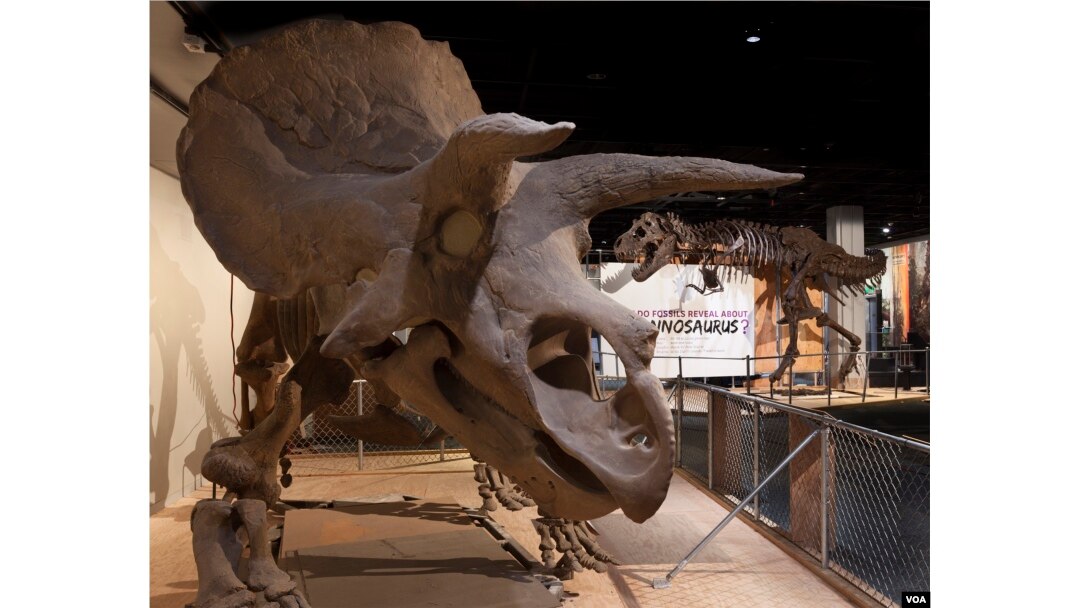“Dinosaurs are very old and cool and very big,” said seven-year-old Ella Smith, recounting his first impression of “The Last American Dinosaurs: Discovering a Lost World,” a new exhibit at the National Museum of Natural History in Washington.
With a Triceratops and Tyrannosaurus Rex towering over them, Smith and her mother, Paige, had wandered into a re-creation of the world 66 million years ago just before an asteroid struck the planet, destroying the dinosaurs and practically everything else.
What unfolds is a preview of the new National Fossil Hall coming in 2019, says Kara Blond, exhibitions’ director at the museum.

Triceratops and Tyrannosaurus Rex reign over the National Museum of Natural History’s new exhibition in Washington, D.C. (Donald H. Hurlbert/Smithsonian Institution)
“The New Fossil Hall will tell the grand sweep of life on Earth over time. This is one little two-million-year segment of that, but it gives us a real window into how people understand science and how they interpret the story,” Blond said. “We deconstruct the world that they lived in by looking at the mechanics of how they lived, how they ate, who they lived with, what plants they fed on.”
Fossil-rich American West
These dinosaurs lived in what is now the arid American West, which was then a pretty tropical place with a seaway running through it. The deltas extending from that seaway turned out to be a perfect place to die and, over time, fossilize, explaining why the area is so fossil-rich.
The uncovered remains document the birds, small mammals and reptiles that survived after the dinosaurs died off, says exhibit curator Kay Behrensmeyer.
Your browser doesn’t support HTML5
The Last American Dinosaurs
“Turtles survived," she said. "There are many aquatic ones. If they were hiding out in the water, they had more of a chance to get through. And earthworms, we actually have burrows from earthworms that are an inch or two above the impact layer.”
That layer is clearly visible in a chunk of rock excavated from the Hell Creek Formation, a portion of the American continent where the asteroid hit, triggering mass extinction.
Some of the rock samples are submitted by fossil hunters hoping to have their specimens exhibited behind glass windows of the Fossil Lab, where visitors can watch scientists as they study and conserve the remains.
The lab is where volunteer Bill King spends the day sorting through ancient crocodile bones. He compares his work to a crime scene investigation without the crime.
“It’s just nature of millions of years ago, and we get to do it all, hands on, at no charge,” he says.
Lesson from dino playbook
The flowering of the planet after the dinosaurs shows that the Earth is resilient and can regenerate over time. But humans are now driving rapid changes in the environment, Behrensmeyer says, warning that our actions could have serious consequences for life on the planet.
“I think with this knowledge we just have to be very careful about how we try to preserve the components of our ecosystems today that will allow this future regeneration to continue,” she said.
Behrensmeyer hopes visitors leave with a greater understanding that creatures like dinosaurs were part of an ecosystem they depended on, just like us.

